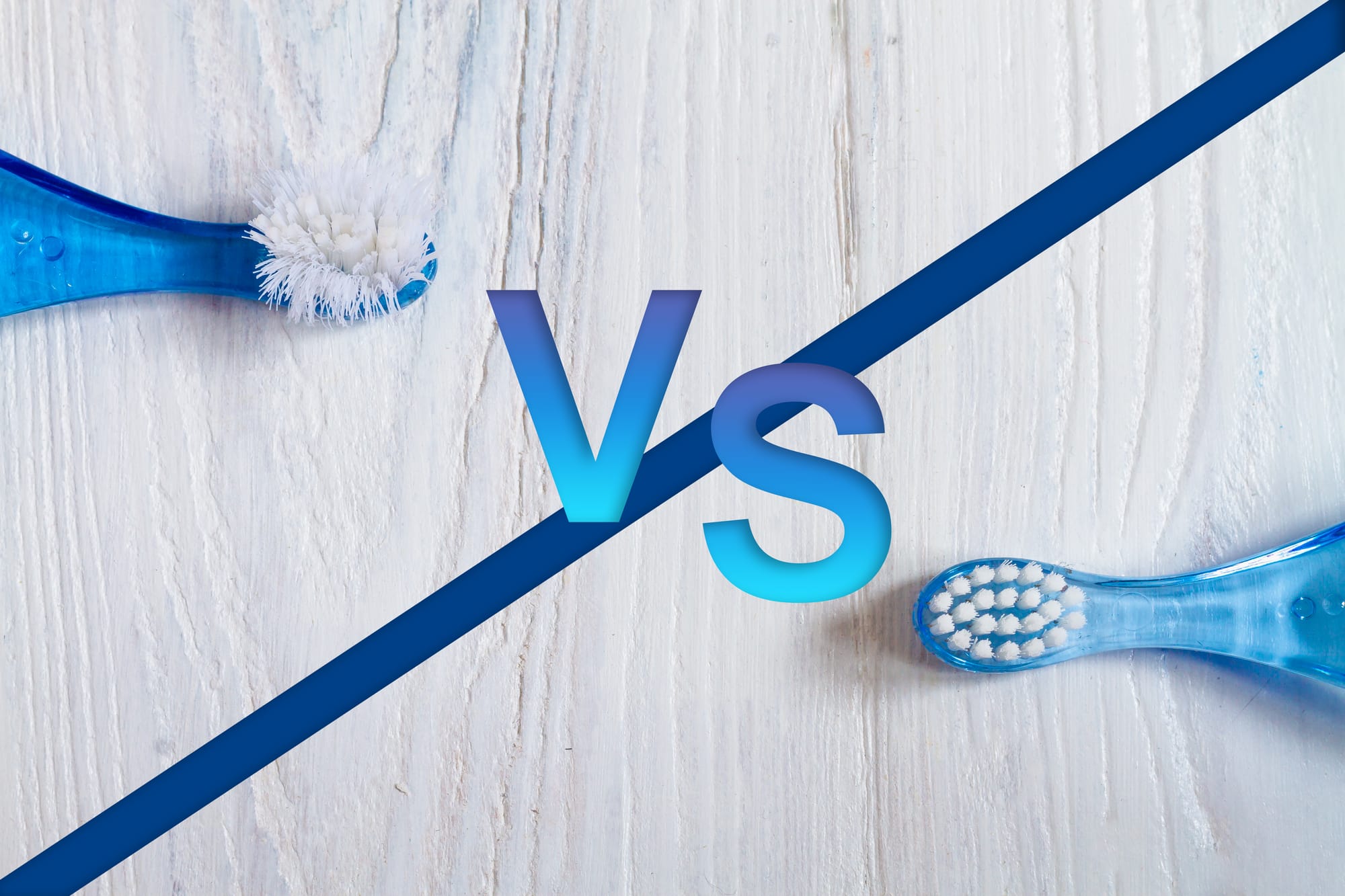
Many people hold on to their toothbrushes far too long, not realizing that worn-out bristles and bacteria buildup can compromise their dental health.
When it comes to your oral health, your toothbrush is your first line of defense—but it doesn’t last forever! So, how often should you change your toothbrush—and how do you keep it clean in the meantime?
🕒 How Often Should You Change Your Toothbrush?
Dentists recommend changing your toothbrush every 3 to 4 months—or sooner if the bristles start to look frayed. Once the bristles lose their firmness, they become much less effective at removing plaque and debris from your teeth and gums. In all honesty, if your toothbrush bristles are NOT sprayed effect then your toothbrush can last for 6 months with proper care and cleaning. Many electric toothbrushes we recommend the heads be changed every 6 months. Do you need to throw it out after 6 months?? Definitely not, if the bristles are still intact and NOT sprayed out and you are using UV light or other method for disinfecting your toothbrush head weekly.
🤒 Change It After Illness
If you’ve recently been sick with a cold, flu, strep throat, or any contagious illness, it’s a good idea to replace your toothbrush immediately after recovery. Germs and viruses can linger in the bristles and potentially lead to reinfection—especially in humid bathroom environments where bacteria thrive. This is NO. 1 critical point to do is change your toothbrush or electric toothbrush head AFTER illness!!
🧪 Worn Bristles Don’t Do the Job
When the bristles become bent or worn, they can’t reach between teeth and along the gumline as effectively. This may leave plaque behind, increasing the risk of cavities, bad breath, and gum disease. If your toothbrush looks like it's been through a battle (even if it's only been a month), it’s time to toss it and grab a new one. If this is YOU....you are using WAY too much pressure when brushing your teeth!! EASE UP little buddy those darn bacteria aren't that sticky, they will come off with just FEATHER light pressure!
💡 Blue Light Therapy: A Modern Upgrade
Many newer electronic toothbrushes feature built-in blue light therapy, which can help reduce bacterial growth on both your toothbrush and inside your mouth. Blue light has natural antimicrobial properties that help sanitize the brush head between uses and may even support healthier gums and fresher breath. While it’s not a replacement for regular cleaning and replacement, blue light can add an extra layer of protection for your oral care routine.
🧼 DIY Toothbrush Cleaner (Weekly Routine)
To further extend the hygiene of your toothbrush, consider giving it a deep clean once a week. Here's a simple DIY disinfecting recipe:
🧴 What You Need:
- ½ cup of white vinegar
- ½ cup of hydrogen peroxide (3%)
- A small glass or cup
🧼 Instructions:
- Mix the vinegar and hydrogen peroxide in a glass.
- Soak your toothbrush head in the solution for 15–30 minutes.
- Rinse thoroughly under hot water.
- Let it air dry upright in a clean, dry holder.
Note: Never store your toothbrush in a closed container long-term—it needs to breathe to avoid mold and bacterial growth.
✅ Quick Tips for Toothbrush Hygiene
- Store it upright and avoid contact with other toothbrushes.
- Rinse well after every use to remove paste and debris.
- Let it dry completely between uses.
- Avoid covering the head unless you're traveling (and even then, let it dry out as soon as possible).
Final Thought
Your toothbrush works hard for you—return the favor by replacing it every 4 to 6 months as required, keeping it clean, and investing in the right technology for your needs. Whether you’re using a basic manual brush or a high-tech sonic toothbrush with blue light, hygiene matters just as much as technique. A healthy mouth starts with a healthy brush. 🦷